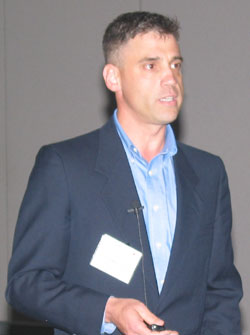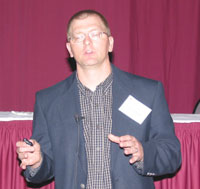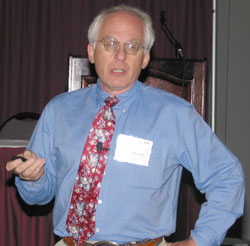
Lowell Gould presented producer reaction to the mature cow maintenance energy requirement (ME) EPD adopted by the Red Angus Association of America. Gould said in a survey of 10 members, 80% said they had used the EPD to rank bulls, all considered it a useful tool for cow herd efficiency when combined with other traits, and 50% said their customers had asked about the EPD. All those surveyed thought the EPD could be used to meet customer needs, but they cautioned that it would take time.



